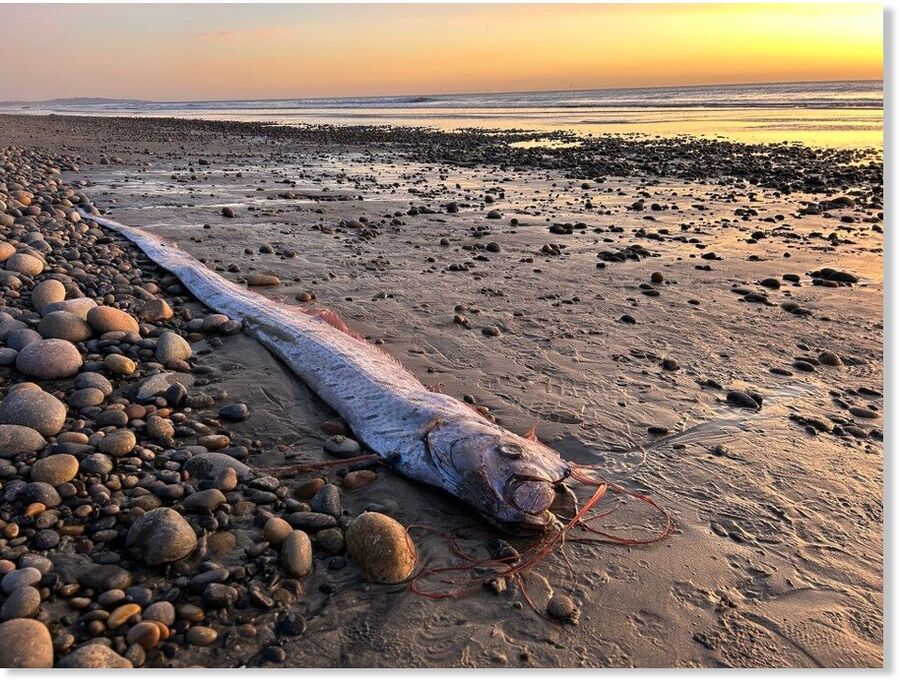
A dead deep-sea oarfish is shown washed up on Grandview Beach in Encinitas on Nov. 7, 2024.
Last week, Scripps Institution of Oceanography PhD candidate Alison Laferriere found the deceased 9.5-foot specimen at Grandview Beach in Encinitas — just the 21st of its species documented to have washed up on California beaches since 1901, officials said.
The previous 12.25-foot long fish was found in August by kayakers and snorkelers in La Jolla Cove.
Comment: For details and video, see: Rare 'doomsday' oarfish sighted near La Jolla shores, California on August 10
Ben Frable, manager of the Scripps Oceanography Marine Vertebrate Collection — one of the largest collections of deep-sea fish in the world — contacted the NOAA Fisheries West Coast team to recover the specimen and transport it to the Southwest Fisheries Science Center, according to a Scripps statement.
"We took samples and froze the specimen awaiting further study and final preservation in the Marine Vertebrate Collection," Frable said. "Like with the previous oarfish, this specimen and the samples taken from it will be able to tell us much about the biology, anatomy, genomics and life history of oarfishes."
It is unclear why two of the rarely seen, short-crested oarfish have washed up on local shores, Frable said.
"It may have to do with changes in ocean conditions and increased numbers of oarfish off our coast," he said. "Many researchers have suggested this as to why deep-water fish strand on beaches.
"Sometimes it may be linked to broader shifts such as the El Niño and La Niña cycle but this is not always the case. There was a weak El Niño earlier this year. This wash-up coincided with the recent red tide and Santa Ana winds last week but many variables could lead to these strandings."
The species has a long, scale-less, ribbon-like silvery body with dark spots. A long red dorsal fin crest extends from the top of the head.
Often described as sea serpents, oarfish can grow to lengths of 30 feet and are the longest bony fish in the world. Oarfish have a mythical reputation as predictors of natural disasters and earthquakes.
If someone finds an unusual or rare creature on the beach, they are encouraged to alert the local lifeguards. If in Southern California, members of the public can notify Scripps Institution of Oceanography at This email address is being protected from spambots. You need JavaScript enabled to view it. or 858-534-3624. Many beaches may be marine protected areas, where taking of organisms — living or dead — is illegal.
Source link

